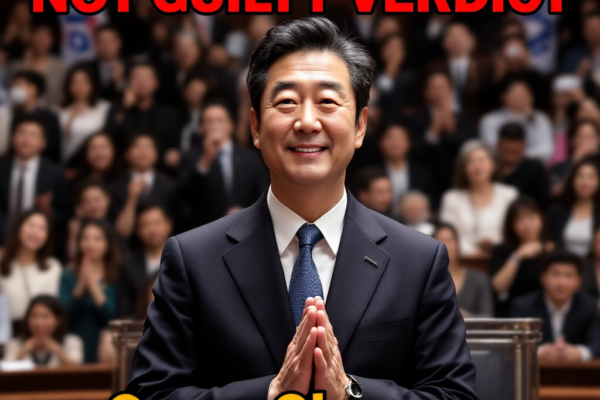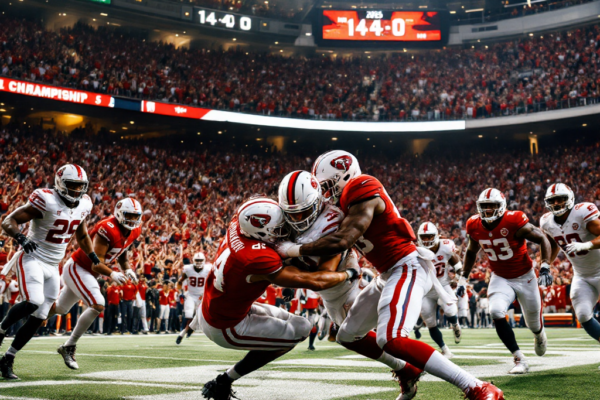Two Hoovers: A Tale That’s Bound to Cause Confusion
When you search for “Hoover” in English, only one figure appears, but Korean search results mostly cover the Great Depression and Herbert Hoover. Have you ever found yourself confused by this name? Today, let’s unravel the stories of two often mixed-up Hoovers: Herbert Hoover and Larry Hoover.
Herbert Hoover: The President of the Great Depression Era
Herbert Hoover was the 31st President of the United States, serving from 1929 to 1933. Unfortunately, his term coincided with America’s most severe economic crisis — the Great Depression. As an economist and businessman, he strived to overcome the economic turmoil but ultimately is remembered for his ineffective response to the disaster.
Larry Hoover: An Icon of Gang Culture
On the other hand, Larry Hoover comes from a completely different background. A Chicago-born gang leader, he led the organization known as the “Gangster Disciples.” Starting his activities in the 1970s, he is noted for attempting unique social reforms through his gang. However, he was also identified as a key figure in organized crime and remains incarcerated to this day.
Why the Confusion?
- Similar Names: Both made a significant impact in their respective fields, sharing the same surname, ‘Hoover.’
- Historical Context: Each was active during pivotal moments in 20th-century American society.
- Social Influence: Herbert Hoover influenced politics and economics, while Larry Hoover left his mark on urban subcultures.
These two Hoovers come from entirely different worlds, yet their shared name often leads to mix-ups. Particularly in Korean sources, information leans heavily toward Herbert Hoover, while Larry Hoover’s story remains less discussed, fueling the confusion.
So next time you encounter the name “Hoover,” why not pause and consider which Hoover is being referenced? It’s a perfect chance to grasp both historical depth and modern urban culture all in one go.
Unveiling the True Nature of Larry Hoover, the King of Gangs
A man who ruled the backstreets of Chicago, known as the founder of the Gangster Disciples. What makes Larry Hoover’s leadership transcend a mere violent gang?
Hoover began his gang activities on the streets of Chicago in the late 1970s. But his approach was unlike any other gang at the time. Larry Hoover aimed to transform the Gangster Disciples from a simple criminal organization into a systematic, alternative society.
Larry Hoover’s Revolutionary Gang Management Style
Hierarchical Organizational Structure: Hoover implemented a military-style rank system. Clear role distinctions such as ‘boss,’ ‘leader,’ and ‘member’ enabled efficient organizational management.
Emphasis on Education and Self-Reliance: Through the “Growth and Development” program, gang members were offered education and vocational training opportunities. This was an attempt to seek alternatives to gang activities.
Sense of Social Responsibility: Larry Hoover insisted that the Gangster Disciples should contribute to their local communities. This goal was aimed not only at improving the gang’s image but also at real social engagement.
The Duality of Hoover: Reformer or Criminal?
Larry Hoover’s efforts introduced a new paradigm to gang culture. However, his activities have been criticized for still being rooted in illegality and violence. Arrested on murder charges in 1973, Hoover remains incarcerated to this day.
Even behind bars, Larry Hoover led reforms within the Gangster Disciples. He emphasized reducing violent acts and promoting social integration, but whether this was genuine change or mere disguise remains a topic of debate.
Larry Hoover’s Legacy: The Intersection with Hip-Hop Culture
Fascinatingly, Larry Hoover and the Gangster Disciples’ influence extends into hip-hop culture. In particular, Chicago’s hip-hop scene frequently references Hoover’s philosophy and the symbols of the Gangster Disciples. This illustrates how gang culture has evolved beyond crime to become a cultural phenomenon.
Larry Hoover’s story reveals the complexity of gang culture. He sought to reform a violent gang environment, yet he himself could never escape the grip of crime. Even today, his legacy sparks controversy, prompting us to deeply reflect on the boundaries between crime, social reform, and cultural influence.
Larry Hoover’s Incarceration: An Icon of Innovation and Organizational Reform
Larry Hoover, sentenced to life imprisonment for murder and organized crime, has a story that extends far beyond prison bars. Inside, he led a new organizational order, striving to transform violent gangs into platforms of education and self-reliance—a bold challenge that captured widespread attention.
‘Innovation’ Behind Bars: Growth and Development
During his incarceration, Larry Hoover sought to radically change the direction of the Gangster Disciples through a program called ‘Growth and Development.’ The core of this initiative included:
- Emphasis on Education: Providing inmates with basic education and vocational training
- Economic Independence: Encouraging pursuit of legitimate business opportunities
- Community Engagement: Seeking ways to improve the gang’s image and contribute to local development
These efforts breathed new life into gang culture. But the pressing question remains—was this truly genuine change?
Hoover’s ‘Innovation’ at the Heart of Controversy
Larry Hoover’s efforts carried a double-edged nature:
- Positive Aspect: Offering gang members a new path focused on education and economic activity instead of violence
- Negative Aspect: Criticized for maintaining the foundations of illegal activity and using reform to expand gang influence
Ultimately, Hoover’s ‘innovation’ did not achieve complete success. Still, his attempts opened a fresh perspective on gang culture and organized crime.
Hoover’s Legacy: A New Paradigm for Gang Culture?
Though Larry Hoover’s efforts may have faltered, his ideas continue to resonate:
- Possibility of Gang Reform: Offering hope that violent organizations can change
- Social Responsibility: Spreading the notion that gangs can positively influence their communities
- Connection with Hip-Hop Culture: Hoover’s story has inspired many rappers and their music
Larry Hoover’s incarceration and reform attempts remain subjects of heated debate. Yet, his story challenges us to deeply consider the complexities of organized crime and the potential for transformation.
Gangs, Society, and Hip-Hop: The Cultural Legacy of Larry Hoover
In gangster rap and the Chicago hip-hop scene, the name Larry Hoover has transcended that of a mere gang leader to become a powerful symbol. The impact of his presence on music and culture is astonishingly deep and wide-ranging. So why do countless hip-hop artists sing his name and call for his release?
Larry Hoover: From Gangster to Cultural Icon
Known as the founder of the Gangster Disciples, Larry Hoover’s influence extends far beyond gang activities. Under the slogan “Growth and Development,” he pursued education and economic independence for gang members. This philosophy inspired many hip-hop artists, and his name quickly became a symbol of “change” and “hope.”
The Inseparable Bond Between Chicago Hip-Hop and Larry Hoover
Larry Hoover’s presence is especially prominent in the Chicago hip-hop scene. Many rappers from Chicago weave his story into their lyrics. To them, Larry Hoover is not just a gang leader but a figure who fought for his community despite harsh circumstances.
Larry Hoover’s Legacy in Gangster Rap
Larry Hoover’s influence in gangster rap is even more evident. Numerous artists mention his name while rapping about the “street wisdom” and “community consciousness” he championed. He has become an icon in gangster rap—an emblem of leadership dedicated to uplifting his community amid adversity.
Larry Hoover at the Heart of Cultural Controversy
Perceptions of Larry Hoover remain deeply polarized. Some revere him as a hero of the community, while others still see him as a dangerous gang leader. This debate continues to unfold through hip-hop music, with Larry Hoover’s name acting as a catalyst for discussions about social inequality and justice.
Larry Hoover’s story reveals a complex facet of American society that goes far beyond gang culture. The reason his name keeps resonating in hip-hop is because the message he represents—the possibility of change and devotion to community—still strikes a chord with many. Larry Hoover has evolved from gangster to cultural icon and social discourse centerpiece, leaving an indelible mark on hip-hop culture.
Between Rehabilitation and Limits: Is Larry Hoover a Social Hero or a Symbol of Crime?
The story of Larry Hoover demands deep reflection from us. At the blurred boundary between community engagement and criminal organization, his life reveals the complex dilemmas of modern society.
As the founder of the Gangster Disciples, Larry Hoover introduced a new paradigm to gang culture. His “Growth and Development” program offered gang members opportunities for education and economic independence, striving to transform a mere violent group into an agent of social change.
Yet despite these efforts, Larry Hoover’s legacy remains deeply controversial:
Potential for Social Integration: Hoover’s approach shows the potential to represent the marginalized voices of disenfranchised communities and inspire real change.
The Lingering Shadow of Crime: However, the illegal activities and violence linked to the Gangster Disciples continue to pose significant social problems.
Systemic Limitations: Larry Hoover’s case exposes the shortcomings of the current justice system and rehabilitation programs. How should society truly handle such complex figures?
Cultural Influence: In hip-hop culture, Larry Hoover’s image is at times a symbol of resistance and at other times a figure to be cautiously regarded.
Ultimately, Larry Hoover’s life poses a crucial question: Can the power of organized gangs become a tool for social cohesion? Or is it merely a seed for endless division?
The answer is far from simple. Yet through Larry Hoover’s story, we can begin a deeper conversation about crime, rehabilitation, and social justice. His narrative mirrors the complicated reality our society faces and reminds us that genuine change requires insight beyond simple black-and-white thinking.




